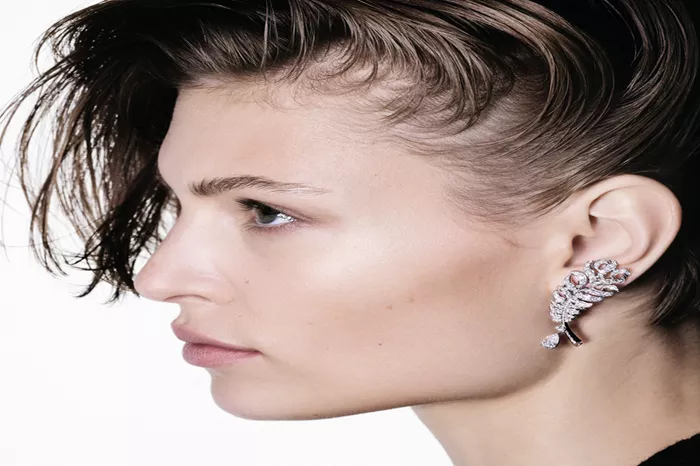Chanel’s latest high jewellery collection takes inspiration from the early designs of its founder, Gabrielle Chanel, who first introduced feathers in her work over a century ago. Feathers have been a recurring motif throughout her creations, beginning as early as 1910 when she adorned a large-brimmed hat with a single, dramatic feather. Before becoming a designer in couture, Chanel’s first venture was millinery, where she developed her fascination with feathers.
In 1932, two decades after her initial exploration of feathers, Gabrielle Chanel unveiled her first and only diamond jewellery collection, Bijoux de Diamants. This collection marked a departure from the rigid, formal designs typical of the time. As Chanel famously said, “My jewellery is never detached from the idea of a woman and her dress. Because dresses change, jewellery, too, is evolving.”
Chanel’s designs featured motifs that would become central to her aesthetic: feathers, stars, comets, suns, fringes, ribbons, and more. One of the standout pieces from the 1932 collection was a large, delicately articulated feather brooch that could be draped across the shoulder or worn in the hair. Key to the collection was the emphasis on ease of wear and versatility—just like her couture, the jewellery was flexible, comfortable, and featured simple clasps that women could manage on their own.
Chanel’s pioneering approach to jewellery design set the tone for a new era, where jewellery became an expression of personal style. A historic Pathé film reel documenting the opening of the Bijoux en Diamants exhibition highlights the groundbreaking nature of the collection, showcasing Chanel’s ability to combine art and apparent casualness in her designs.
As the film puts it, “In her famous apartment on Faubourg Saint Honoré, Chanel launches her new diamond creations… Only a woman can scatter precious stones gracefully through the hair with jewels cascading like gossamer ribbon… Chanel brings diamonds back into vogue by marrying art with apparent casualness.”
Related topics:

